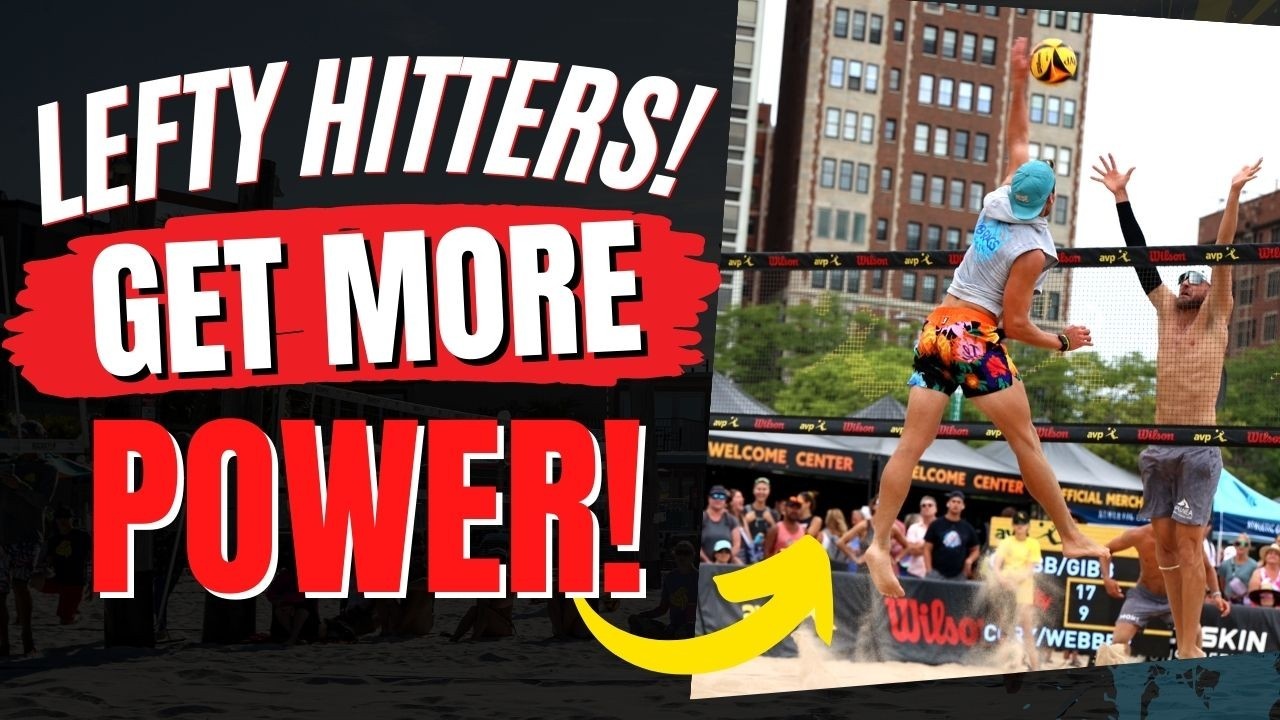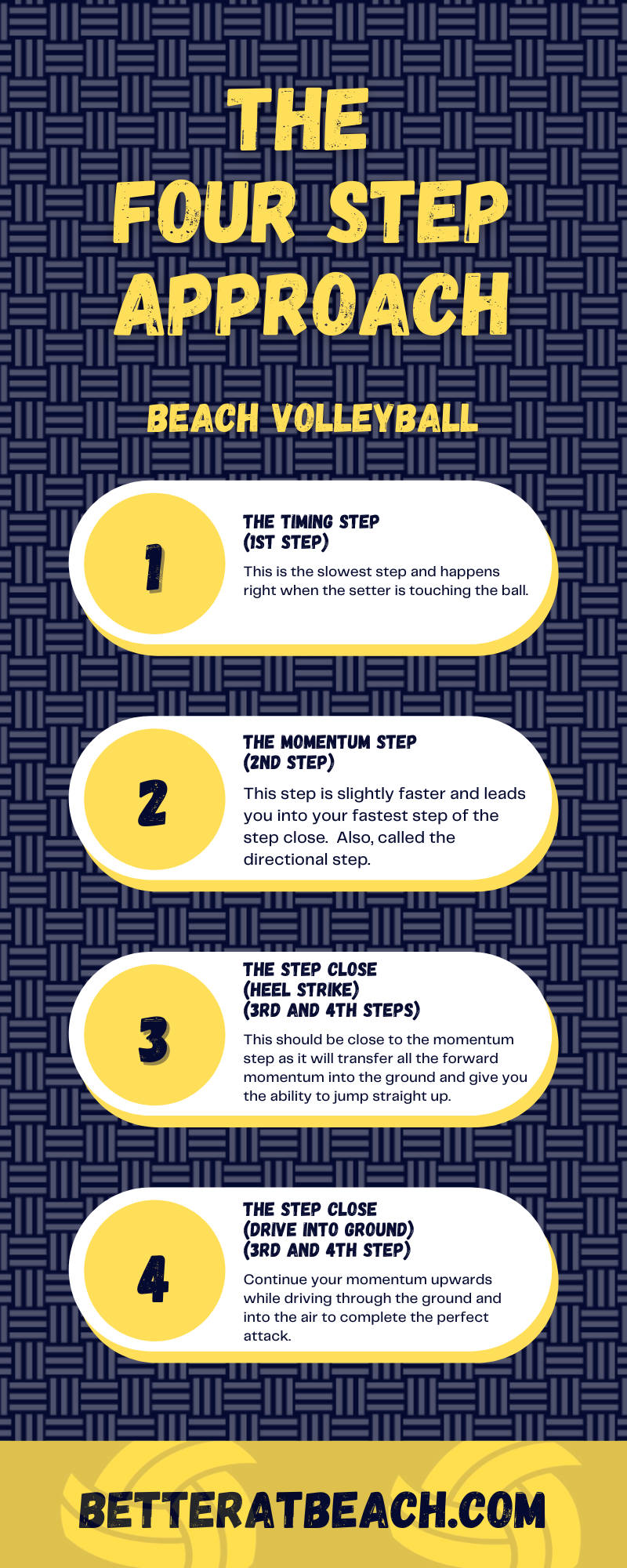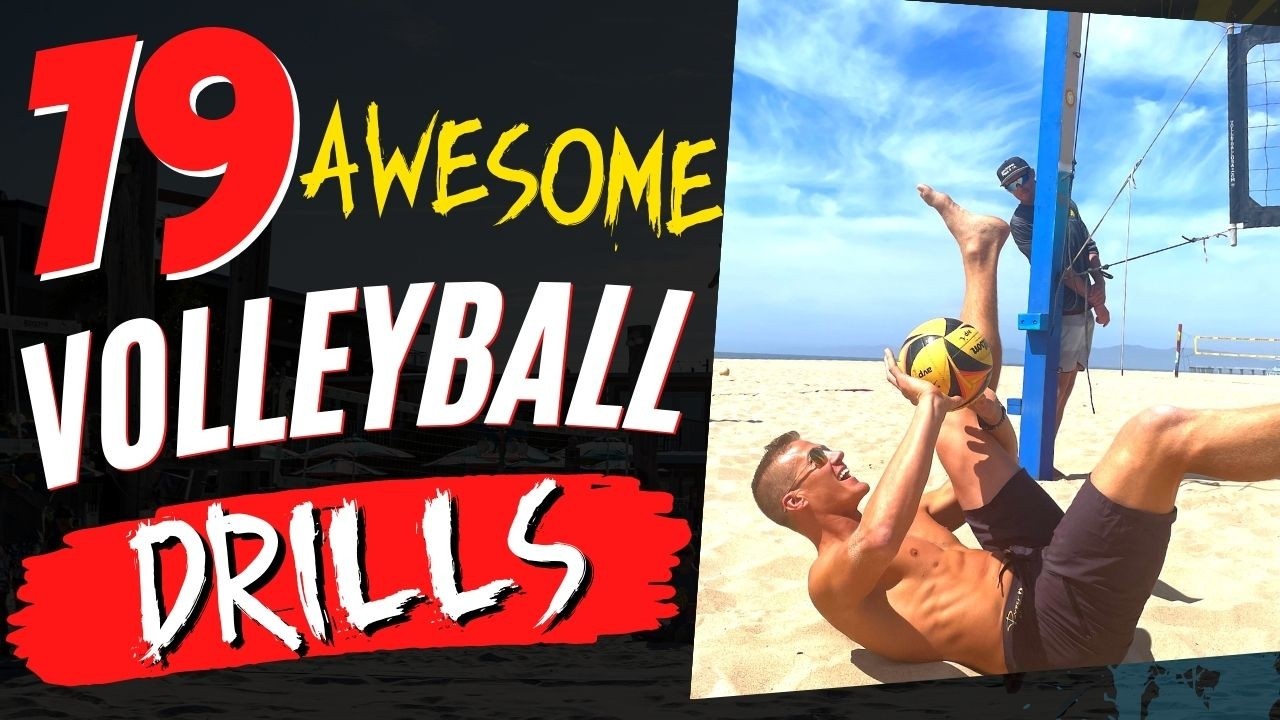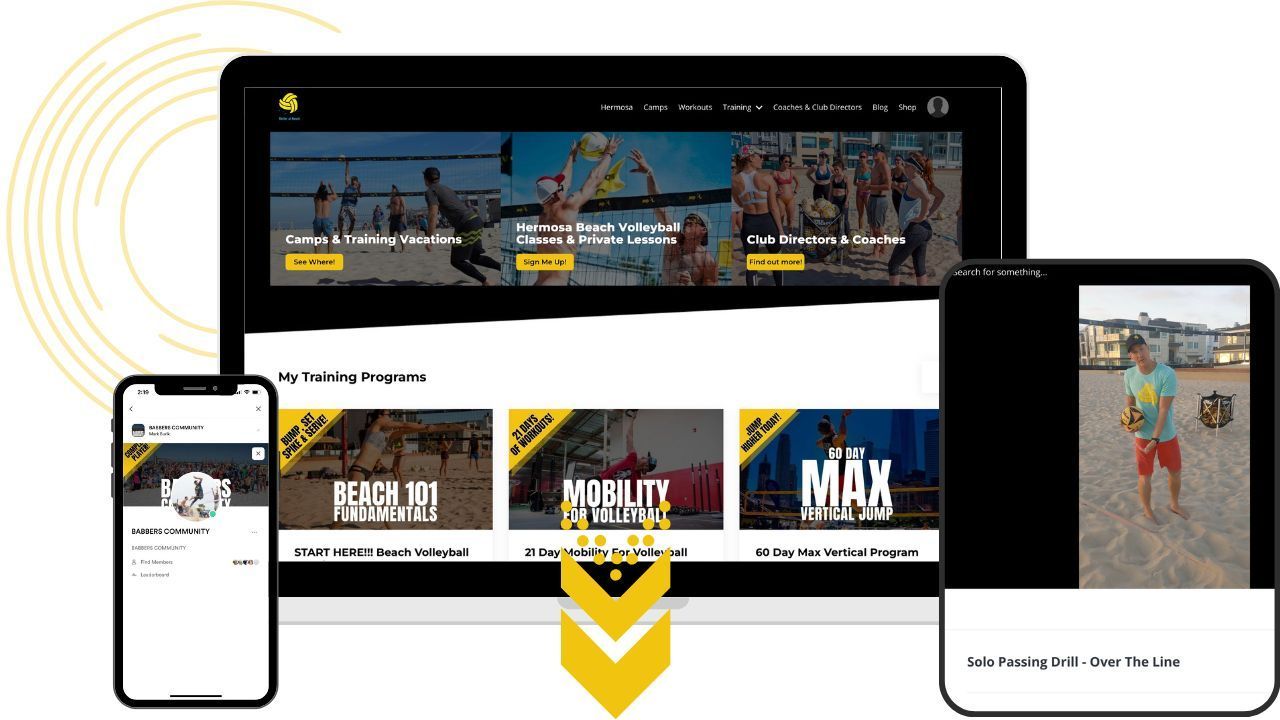
SPIKING A VOLLEYBALL WITH MORE POWER FOR LEFT HANDED VOLLEYBALL PLAYERS
We're different. We're the weirdos, the unconventional ones. We give blockers nightmares, and, for whatever reason, are almost always the wristiest ones on the beach. You think you have a read on us, but you don't, because that angle we were showing just became a line chisel. We're in short supply but in high demand.
We're the lefties.
What we will cover:
- HOW TO TAKE ADVANTAGE OF BEING A LEFT HANDED HITTER IN VOLLEYBALL
- THE FIRST KEY TO BEING A LEFTY IN VOLLEYBALL: TALK TALK TALK
- THE FOUR STEP APPROACH
- ARM SWING MECHANICS AND THE FIVE KEY BODY POSITIONS TO HITTING A VOLLEYBALL FOR ULTIMATE POWER
One of our coaches, Evan Cory helps walk an athlete through gaining more power in spiking a volleyball during a private lesson at one of our training camps in the beautiful St Pete, Florida.
HOW TO TAKE ADVANTAGE OF BEING A LEFT HANDED HITTER IN VOLLEYBALL
Being a left-handed volleyball player on the beach can be a tremendous advantage. First and foremost, we are on the right side of the “rule of supply and demand”. There are so few of us, yet we always present an additional threat. Being left-handed gives you a built-in edge, the threat of not one option, but TWO. It gives defenses a different look and a completely new arsenal of threats on offense in beach volleyball.
However, to unlock all of the tools and advantages of being left-handed and spiking a volleyball with power, you first must understand how to properly make use of everything before you.
One of the great left-handed volleyball spikers is Travis Mewhirter. When Travis Mewhirter was in Sofia, Bulgaria, training for one-star FIVBs in Italy and the Netherlands, on his first night there, rather than go through a light practice, they mixed it up, playing no-jump with a couple older locals. Never having played with his partner other than him having watched Travis play in a few FIVBs in Bulgaria previously, he was aware that Travis was a lefty -- he just kept forgetting. Probably half of the sets ended up too far outside, dropping on his right shoulder instead of Travis’s left.
WHY DID THIS HAPPEN?
You have to consistently remind your volleyball partner that you are a left handed spiker.
As lefties, we have an extra burden in that our communication, especially with new partners, has to be impeccable and borderline annoying. When we're playing on the right, which is almost always -- more on that later -- we're going to take our set far more inside than a right-hander will. Thus, we must constantly remind our setter that "I'm coming to you" or "straight up" or "to the middle." We must be clearly communicating, at all times, or we're almost never going to get the set we need.
THE FIRST KEY TO BEING A LEFTY IN VOLLEYBALL:
TALK TALK TALK
The first key to being a lefty in volleyball is a simple one: Talk, talk, talk.
You'll thank yourself for it.
Watch this video with Travis Mewhirter as he explains how to communicate with your volleyball partner and where to be on the volleyball court.
Why do left-handed hitters always play on the right side in volleyball?
Many times, trying to pick a side to play on the beach volleyball court can prove difficult. Do you play on the left or right? Is there a reason why we should choose one over the other?
Gary Schreiber, a coach in Huntington Beach who worked with Ty Tramblie at the time, was incensed. He hated -- absolutely hated -- that a left handed volleyball attacker would play on the left. Why?
It removes the inherent advantage you have of being lefty.
Want to show your support and help us make more content?
Buy one of these cool beach volleyball gears...
 |
|
|---|---|
| Franklin Sports Ball Pump Kit |
Being left-handed and playing on the right side gives both players the threat of an option play on serve receive. Watch teams such as Latvia's Aleksandrs Samoilovs and Janis Smedins, or Italy's Adrian Carambula and Enrico Rossi, or our own Miles Partain and Paul Lotman, and you'll see why this is so valuable. Lotman and Partain finished third in AVP’s 2021 Chicago almost exclusively because of Partain's option ability, something he makes even more threatening with a deadly jump set that often leaves Lotman with an open net. They are a dynamic duo worth watching for how to play beach volleyball as a lefty.
Having two options presents a mighty burden for a blocker. Does he stay with the setter, who could option, or shuffle to the approaching offensive player? Even optioning just once or twice a set makes the threat real enough to delay the blocker, giving your partner an added offensive advantage in volleyball.
Being all but forced to play right isn't a bad thing. It's a blessing.
It's good to be weird.
So, now that you know what side to play on and how to communicate to your partner in volleyball, let’s cover some basics to give you the ultimate power for spiking in volleyball as a lefty.
THE FOUR STEP APPROACH
Evan shows a quick demo on how to approach for spiking a volleyball in this Volleyball Short Tips for Left Handed Hitters.
The Timing Step (First Step)
This is the slowest step and happens right when the setter is touching the ball. This step will help set up your rhythm based on what set is produced.
The Momentum and Directional Step (Second Step)
This step is slightly faster than the first step which leads you into your fastest step of the step close.
This is used to get your feet to the ball. Beach volleyball can have unpredictable elements such as wind. This step helps you adjust if the ball gets pushed by the wind or if the set goes outside of the intended call.
The Step Close (Third and Fourth Step)
This step in beach volleyball footwork should be close to the directional step as it will transfer all the forward momentum into the ground and give you the ability to jump straight up.
Find more in depth attacking and approach coaching in our previous blog,
How to Spike a Volleyball - Footwork Explained.
ARM SWING MECHANICS AND THE FIVE KEY BODY POSITIONS TO HITTING A VOLLEYBALL FOR ULTIMATE POWER
1. QUARTER SQUAT, ARMS BACK
The best way to find this starting position is to squat like you are doing a barbell squat and then throw your hands behind you. This is the quarter squat position with your arms back. Keep your chest lifted and glutes pushed back in your squat. You should feel tension in your glutes versus your quads in this position. If you are finding more tension felt in your quads, avoid leaning too far forward as this will kill your momentum in your jump.
2. UP AND ROTATE
The next position is where the hitting hip (right for right handed players, left for left handed players) comes forward as the hitting chest goes back. This allows for a maximum stretch through the thoracic. Think about a rubber band being stretched right before you let go. Find that feeling in this position to help give that "snap" when hitting the volleyball. The Hip Drive!
3. THE ELBOW AND CHEST SEQUENCE
As you draw your elbow back into the “Bow and Arrow” position, remember to keep your wrist and arm loose and whippy. You should be able to turn your hand and wave to someone behind you.
4. ELBOW COMES UP, HAND STAYS BACK
In this position, your tricep is facing forward and the top of your forearm is facing up and then it comes through. You do not freeze in this position, but it is a vital position to hit on the way to your spike.
5. HIGH CONTACT AND FOLLOW THROUGH
You should contact the ball at a high point during your arm swing. This will give you the best control and the highest conversions.
Check out the first part of this three part series where Mark and Brandon walk you through how to find the key body positions for hitting in beach volleyball.
Want to dig deep and continue to work on your volleyball spiking? Wanting to run drills but can never find someone to run them with?
Check out our favorite and MOST FUN solo drills for volleyball players.









